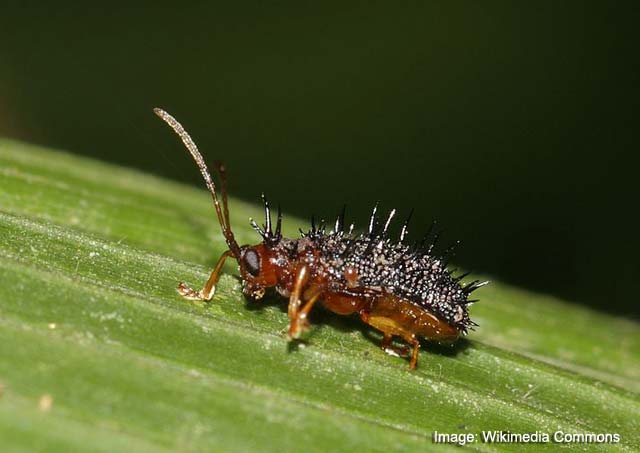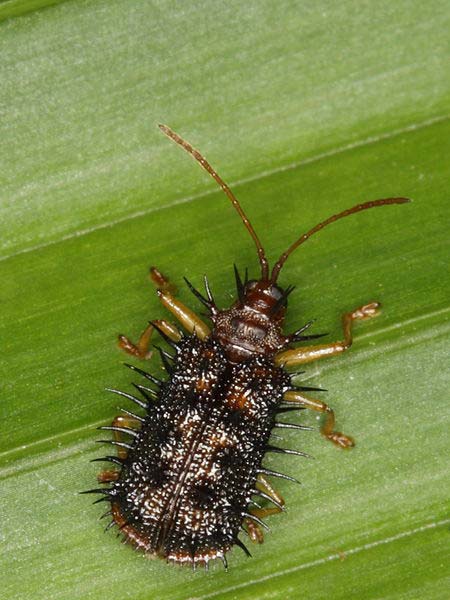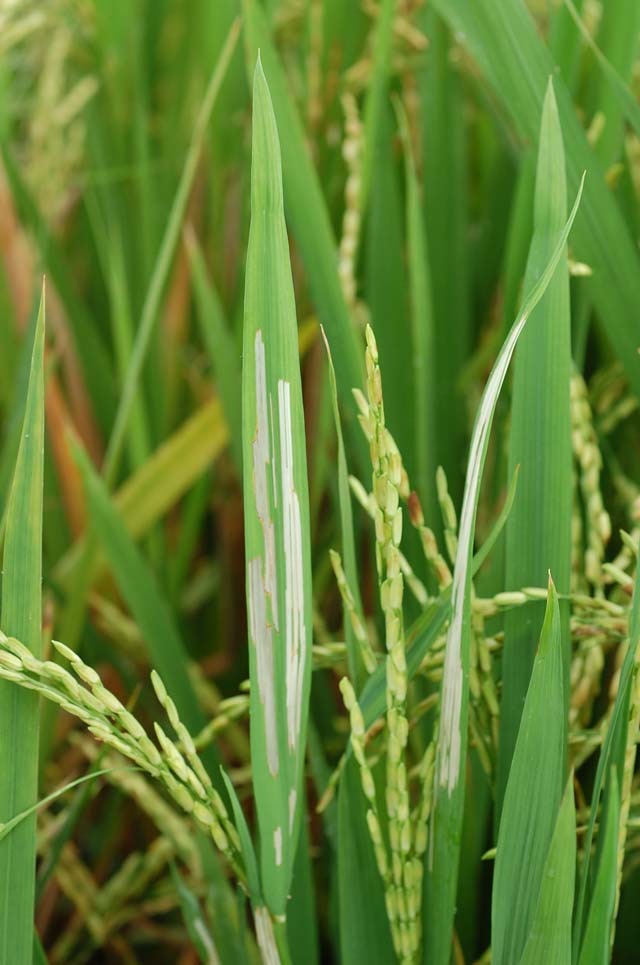Rice hispa
Dicladispa armigera (Olivier)
What it does
 Rice hispa scrapes the upper surface of leaf blades leaving only the lower epidermis.
Rice hispa scrapes the upper surface of leaf blades leaving only the lower epidermis.
It also tunnels through the leaf tissues. When damage is severe, plants become less vigorous.
Why and where it occurs
The presence of grassy weeds in and near rice fields as alternate hosts harbor and encourage the pest to develop. Heavily fertilized field also encourages the damage.
Heavy rains, especially in premonsoon or earliest monsoon periods, followed by abnormally low precipitation, minimum day-night temperature differential for a number of days, and high RH are favorable for the insect’s abundance.
The rice hispa is common in rainfed and irrigated wetland environments and is more abundant during the rainy season.
How to identify
Check for feeding damage:
- scraping of the upper surface of the leaf blade leaving only the lower epidermis as white streaks parallel to the midrib
- irregular translucent white patches that are parallel to the leaf veins caused by tunneling of larvae through leaf tissue causes
- withering of damaged leaves
- whitish and membranous leaves
Rice field appears burnt when severely infested.
Hispa feeding damage is similar to feeding marks caused by flea beetles. To confirm cause of damage, check for insect presence, and the characteristic feeding marks:
- elongated, clear feeding marks
- white streaks of uneaten lower epidermis between the parallel leaf veins
Why is it important
The insect pest is a problem particularly in Bangladesh. Records show that it can infest large areas and causes yield losses of up to 20%.
Management principles
A cultural control method that is recommended for the rice hispa is to avoid over fertilizing the field. Close plant spacing results in greater leaf densities that can tolerate higher hispa numbers. To prevent egg laying of the pests, the shoot tips can be cut. Clipping and burying shoots in the mud can reduce grub populations by 75−92%.
Among the biological control agents, there are small wasps that attack the eggs and larvae. A reduviid bug eats upon the adults. There are three fungal pathogens that attack the adults.









